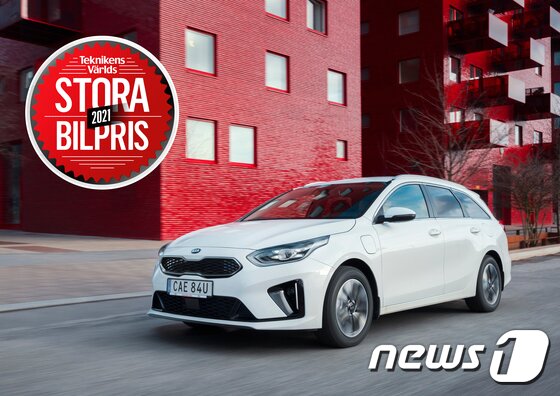 |
| Kia Motors reported on the 7th that the seed wagon plug-in hybrid (PHEV), a rechargeable hybrid electric vehicle, was selected as the ‘2021 Best Car’ by the leading Swedish automobile magazine’Technikens Barlz’. Since its launch in January last year, the Seed Wagon Plug-in Hybrid, which has sold more than 4,007 units (a total of 9,210 units in Europe) in Sweden alone, is equipped with a 8.9kWh lithium polymer battery pack and a 44.5kW electric motor, so it can operate only with electricity up to 60km. (Provided by Kia Motors) 2021.1.7/News 1 |
Despite the new coronavirus infection (Corona 19) crisis, Korea’s electric vehicle exports have grown to the fourth largest in the world.
According to the’Export Trends and Implications of Electric Vehicles, Leaders in New Growth Industry,’ announced by the Korea International Trade Association on the 31st, Korea’s export of battery electric vehicles last year increased 65.9% from the previous year to $3.9 billion, recording the first hybrid car export ($2.5 billion). ).
In the export of eco-friendly vehicles (US$7.1 billion), including all battery electric vehicles, plug-in hybrid vehicles, and hybrid vehicles, battery electric vehicles accounted for 54.7%, recording the highest proportion.
Exports of battery electric vehicles have grown significantly, especially in the European market. Last year, exports to the UK, France and Italy showed a triple-digit increase of 624.3%, 112.2%, and 260.2% compared to the previous year, respectively. In Norway, where the proportion of eco-friendly cars was high, 97.3% of the cars exported last year were battery electric cars, while the proportion of battery electric cars among the cars exported to the United States during the same period was only 3.4%, a sharp contrast.
In addition, the proportion of exports to Europe of last year’s eco-friendly car exports was 68.0%, exceeding 3 times that of 20.4%, which is the share of all automobile exports, and Europe rapidly emerged as the largest export market for eco-friendly cars.
In addition, Korean electric vehicles (battery electric vehicles + plug-in hybrid vehicles) ranked 4th in the world and 5th in the world as a whole for eco-friendly vehicles based on exports in the first to third quarters of last year.
 |
| Courtesy of Trade Association © News1 |
In the Current Comparative Advantage Index (RCA), which interprets that the item has a comparative advantage over all exports if the index is greater than 1, and the higher the index is, the number of battery electric vehicles in Korea is 1.55 in 2017, 3.05 in 2018, and 3.18 in 2019 for 3 years. Rose in a row. Plug-in hybrid cars also steadily rose to 1.57, 1.78, and 2.32, contributing to the rise of eco-friendly car competitiveness.
Hydrogen electric vehicles only exported 995 units last year, but in terms of export value, it increased 26.3% year-on-year, and in July, it was the first hydrogen truck export to Europe. In the battery sector, which determines the performance and price of electric vehicles, Korean companies boasted excellent competitiveness, taking the 2nd, 4th, and 5th share of the global electric vehicle battery market from January to November 2020.
The report said, “Each country is taking advantage of the pandemic crisis as an opportunity to transform into a’sustainable low-carbon economy’, and is actively engaged in environmental regulations, investment in charging infrastructure, and providing incentives to purchase eco-friendly vehicles.” Although it has been growing at a rapid pace, the electric vehicle market will once again face a new growth momentum with Corona 19.”
According to the report, major automakers are expected to launch more than 500 new electric vehicle models by 2022 in line with strengthening environmental regulations. In addition, as each country strengthens or extends incentives to purchase eco-friendly cars to boost the economy, the rate of consumers changing from internal combustion locomotives to electric cars is also increasing.
A martial arts official said, “In order to preoccupy the fast-growing European electric vehicle market, it is necessary to closely grasp each country’s environmental regulations, incentive policies, and market trends, and to supply competitive vehicles in a timely manner.” We must continue to secure a competitive advantage through tailored system maintenance, infrastructure investment, and R&D enhancement.”
